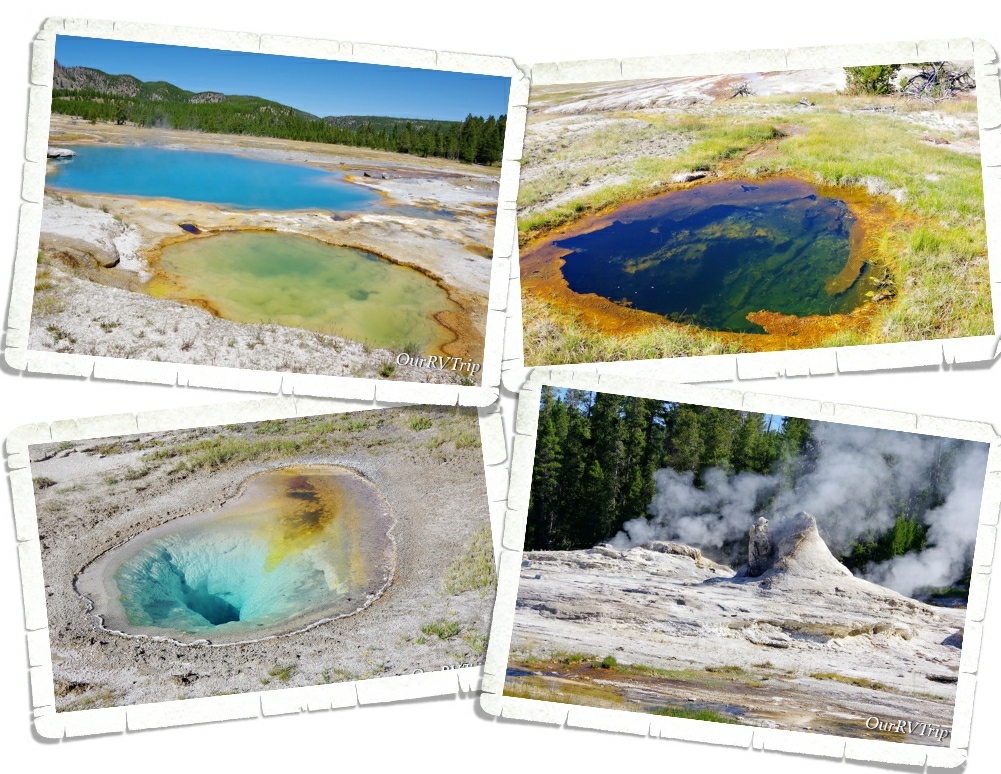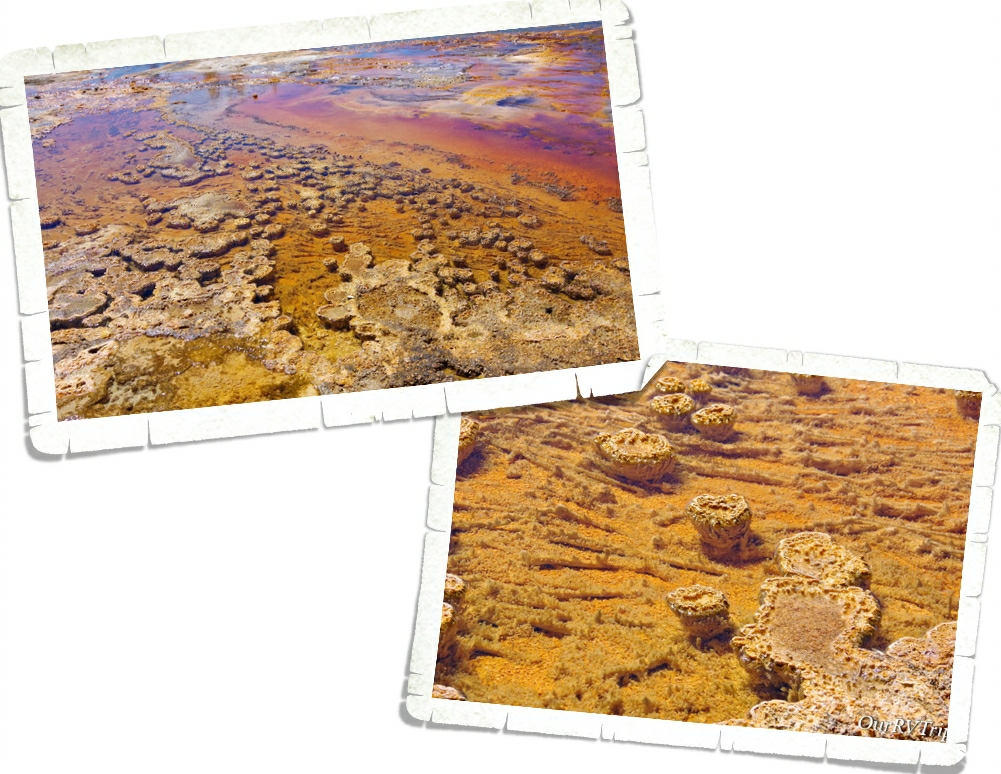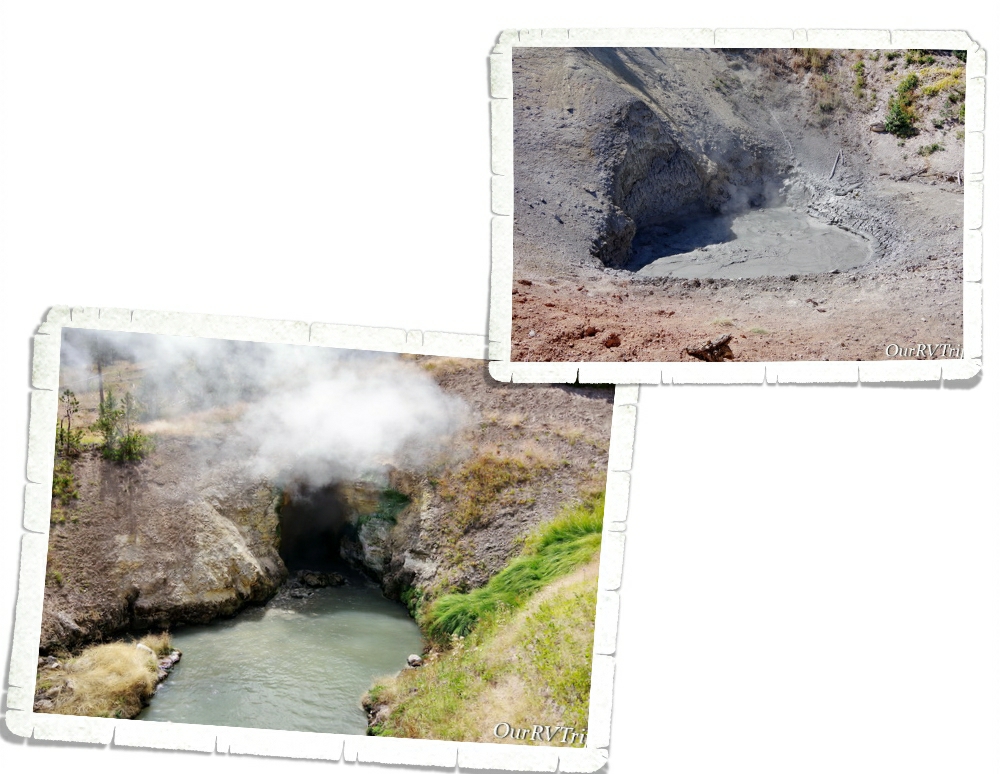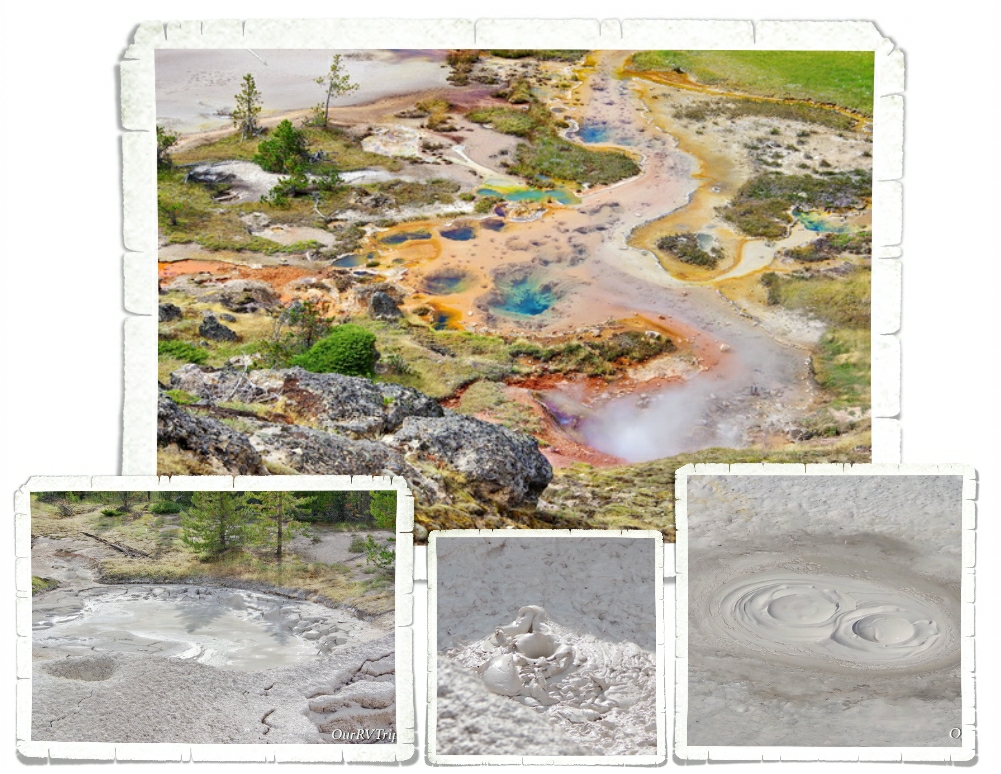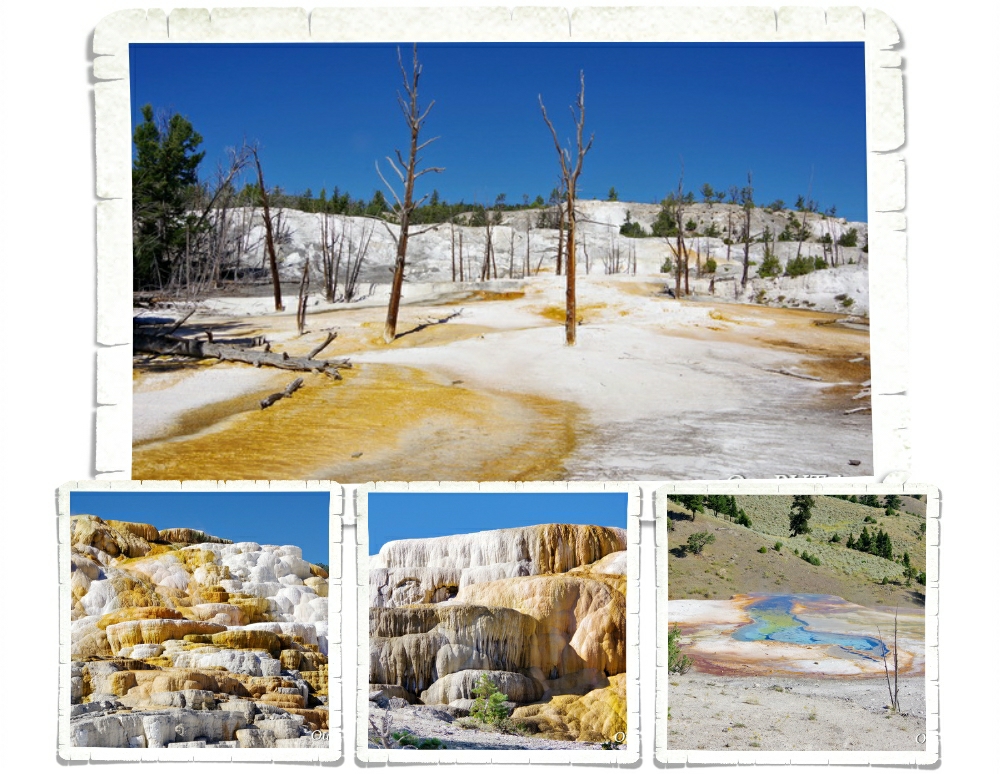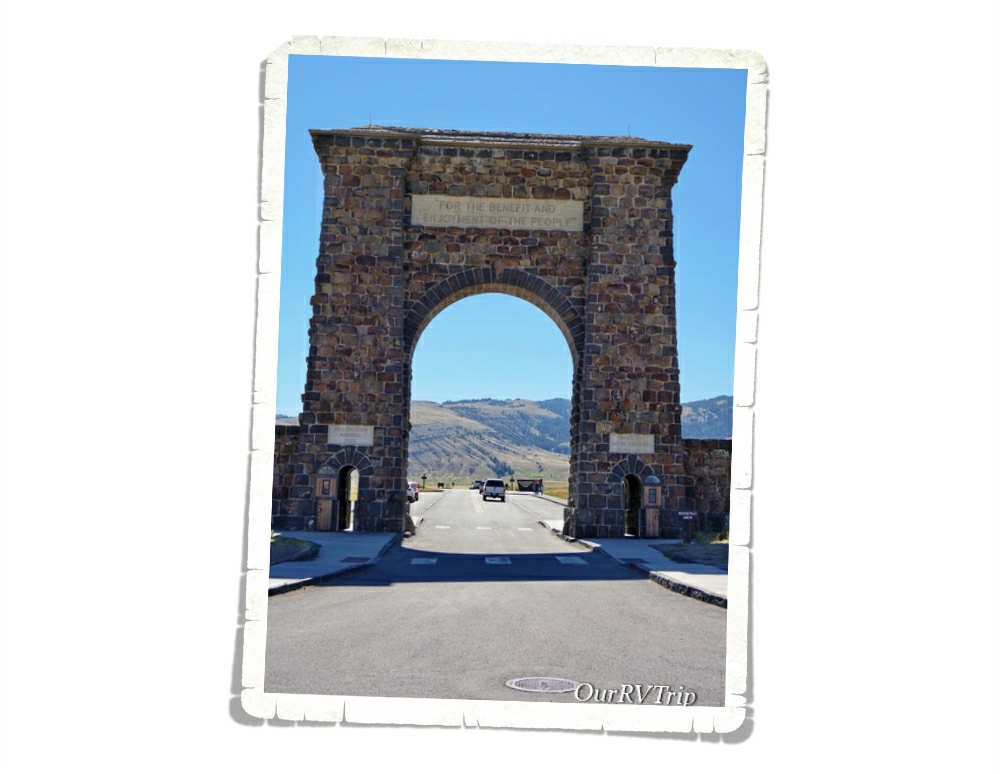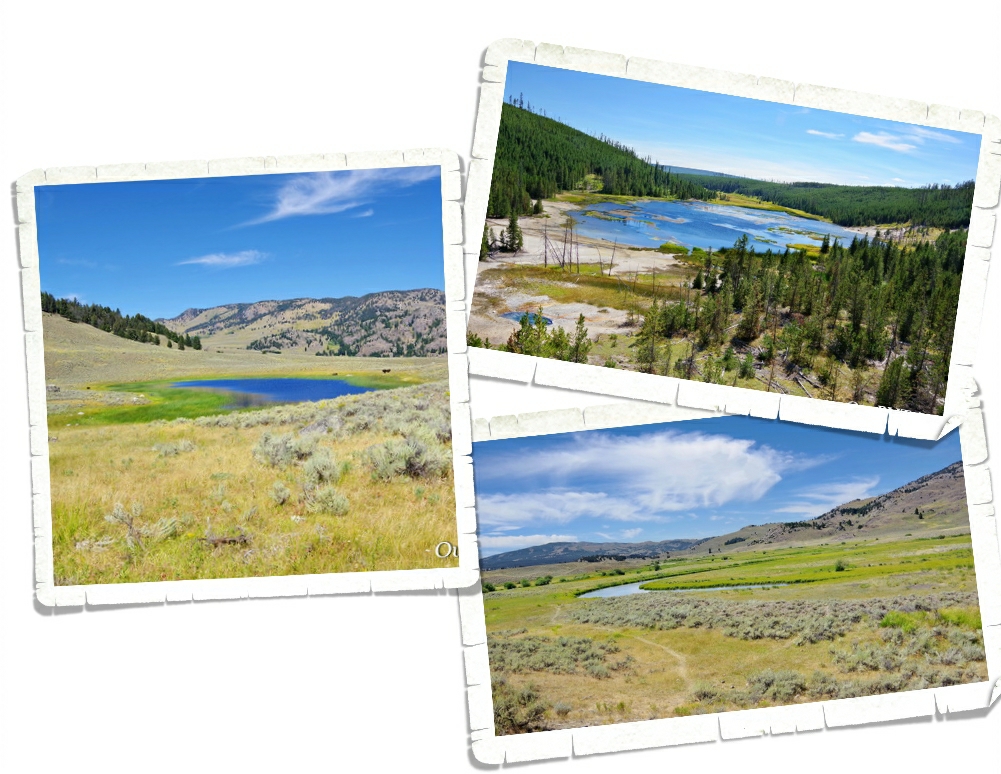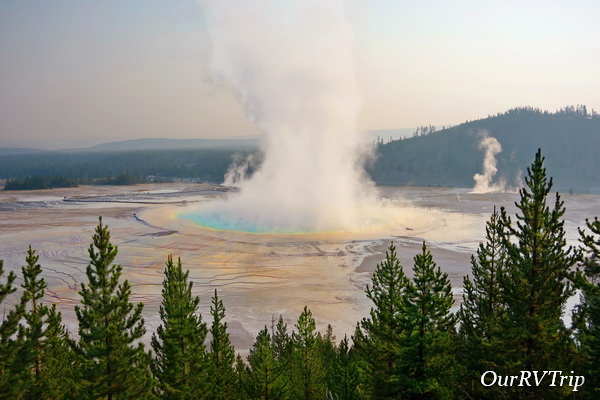
Yellowstone National Park
Hey Guys! We spent almost two weeks in West Yellowstone, MT so we could explore Yellowstone National Park. This is a park that everyone seems to compare all other parks to. We were both excited and a little… weary about exploring this park. We don’t have the best track record when it comes to enjoying the super popular parks. We’re not fans of overly crowded areas plus sometimes we’ve heard the hype and built it up so much in our minds that the park doesn’t have a chance to live up to our high expectations.
Yellowstone National Park is not only our Nation’s very first National Park it’s also the world’s very first National Park. When people find out we’re on a National Park Tour there are two parks they always ask about…Yellowstone and Glacier. And they were usually shocked when we told them that we hadn’t been to either park yet but had plans to…eventually.
At the heart of Yellowstone National Park sits the remnants of a supervolcano. This supervolcano last erupted somewhere around 631,000 years ago and now is the power behind all of Yellowstone’s hydrothermal features. You see signs everywhere warning about the fragile crust and the heat of the water. Another words…stick to the trails! Even with all of the signs, we saw people getting off the trails. This not only puts them in danger of falling through the thin crust and getting burned by the boiling water that’s sitting just under the surface of the crust…but it also damages fragile ecosystems that will take years to recover.
We liked to get into the park early in the morning. Not only were we avoiding the major crowds by getting out early, it was also easier to see where all the geysers were. It looked so otherworldly looking out over the land and seeing so many steam columns coming up from the various hydrothermal geysers, hot springs, steam vents and mud pots.
When you ask most people what first comes to mind when they think of Yellowstone National Park, more often than not they’re going to say Old Faithful. We spent almost an hour waiting for the famous geyser to do it’s thing. The park has tons of benches around the viewing area so people can sit and wait. It was…ok. I mean, I’m glad we saw it…but once was enough.
Old Faithful was first documented in 1870 and is one of Yellowstone’s more predictable geysers erupting about every 90 minutes. So, what’s a geyser? Basically, a geyser is a hot spring that has a narrow space somewhere in its “plumbing” system where steam and water will escape as pressure builds up. When pressure reaches a critical temp and the water bubbles harder…the geyser expels water and steam until the pressure in the plumbing has dropped again.
Old Faithful might be the most well known geyser in the Upper Geyser Basin, but it’s definitely not the only one. There are 150 different geysers, hot springs and steam vents found along a boardwalk trail. Honestly, I enjoyed the boardwalk trail more than Old Faithful. But that’s just me.
Even with the whole covid virus thing happening there were still tons of people at Yellowstone during our visit.
So many people. Everywhere.
We were told by one of the volunteers that the NPS had, for some reason, cut the Ranger numbers down to a quarter of what they usually were. I believe it. We hardly ever saw a Ranger out. We did see tons of people treating the park like their own personal playground. We saw someone moving a fence so they could park there. It was crazy.
Yellowstone is home to close to 10,000 hydrothermal features… that’s over half of the total hydrothermal features found worldwide. All of those hydrothermal features are evidence that the Yellowstone volcano is still very much alive and active.
They’re called thermophilic communities. Bacterial microbes from thick structures and mats…communities made of a descendant of an ancient bacterium called Thermocrinis. The colors and shapes of the communities depend on the types of microbes, pH, and temperature of the water. Mats can be as thin as a single piece of paper or as thick as a 600 page book. Cyanobacteria form columns or pedestals. These communities are made up of layers and can be a mix of thermophilic microbes.
Another hydrothermal feature you can find in Yellowstone National Park is called a mudpot.
A what?
A mudpot is exactly what it sounds like. A bubbling stinky mud pool. A mudpot forms when a hot spring is very acidic and has a limited water supply which causes the rock around it to dissolve into a thick slurry type substance. While I don’t love the smell…I do love the different colors and formations you can find in the area.
The Grand Canyon section of Yellowstone has several overlooks where you can get a good look at the Upper and Lower falls of the Yellowstone River. I wasn’t expecting canyons like this in Yellowstone. The canyon is just over 20 miles long and has some really pretty colors along the walls of the canyon.
Mammoth Hot Spring Terraces are constantly changing shapes and colors as hot springs go dormant and then suddenly come back to life. Hot water combined with dissolved limestone bubbles up to the surface and over time builds steps and terraces that can be different colors based on the temperature of the water.
We spent a couple of hours exploring the different terraces of Mammoth Hot Springs. We got there early one morning and beat the crowd. I’d read that it’s a popular spot and to get a parking spot you need to get there before 10am. We were finishing up as the crowds started to descend and people were circling the parking lots trying to find a spot.
“For the benefit and enjoyment of the people.” President Roosevelt was visiting Yellowstone National Park in 1903 during construction of the north entrance arch and was asked to lay the cornerstone. The arch was then called the Roosevelt Arch. We drove all the way up to the north entrance just to see the Roosevelt Arch. I saw a picture of this arch in a textbook in elementary school and decided I would one day go see it. Seeing the arch in person after having it on my “bucket list” for so many years was amazing. The northern entrance was the first and main entrance into the park.
Yellowstone NP protects over 2.2 million acres of land. To give you some size perspective…that is larger than Delaware and Rhode Island combined. There are five entrances that will get you into the park and get you to the Grand Loop Road which is the way to get around the park. The loop road looks more like a figure eight and is about 142 miles long. We did it in two very full days. On day one we did the bottom half and then the next day we did the top half.
The main loop road might only be142 miles long but there are 300 miles of paved roads in the park that will take you off the beaten path.
If Old Faithful is the first thing people think of when you mention Yellowstone, Grand Prismatic is the second. This is what I really wanted to see. We tried to see it three times while we were in the park, but never made it there before the crush of people. Our last day in the park we went super early to beat the crowds…but…it was smoky from nearby wildfires and it was cold, so steam blocked most of the view. I really wanted to see those bright vibrant colors…but I have to admit, I’m not mad at the softer pastel morning lighting that we got.
We drove to both Lamar and Hayden Valleys to see the bison herds. Yellowstone NP is the only place in the United States where bison have continuously lived since prehistoric times. The herds here are the largest found on public lands. We saw so many bison and they pretty much go wherever they want to go…whenever they want to. We got to Yellowstone right as bison rut was starting. The bison bulls were pretty aggressive with each other and anyone else they felt might get in their way or challenge them. Including cars on the road. One bison charged a car and busted a tire. I guess he was tired of the paparazzi taking pictures. ;-p
Bison and elk roadblocks were a frequent thing. We also saw tourons trying to get killed by two ton bison bulls as they were taking pictures of it. I can’t believe we didn’t see anyone get hurt. It was close a few times though.
We saw tons of bison, loads of elk…pronghorn antelope, dragonflies galore…but no wolves or bears. We did see a bear print on a hike…but no actual bears.
We enjoyed our time in Yellowstone National Park. I’m not sure it made our top ten list. I mean…Yellowstone is definitely the most colorful and smelliest NP we’ve been to…but Guys, you can only look at so many geysers and hot springs before they kind of all start looking the same. I hate to say that…but I like to keep it real with y’all. While we totally appreciate the history of Yellowstone National Park and love the history/story this park is preserving…we probably won’t go back any time soon.
Our Yellowstone visit was cut short by two days when Jerl’s retina detached in his right eye. If you’ve been with us for a while, you’ll know that he’s had two other detachments (both in his left eye) so… we knew what to expect and headed back to Missouri three weeks before schedule. I’ll tell you more about that in the next post.
See y’all down the road!
#NationalParkTour




